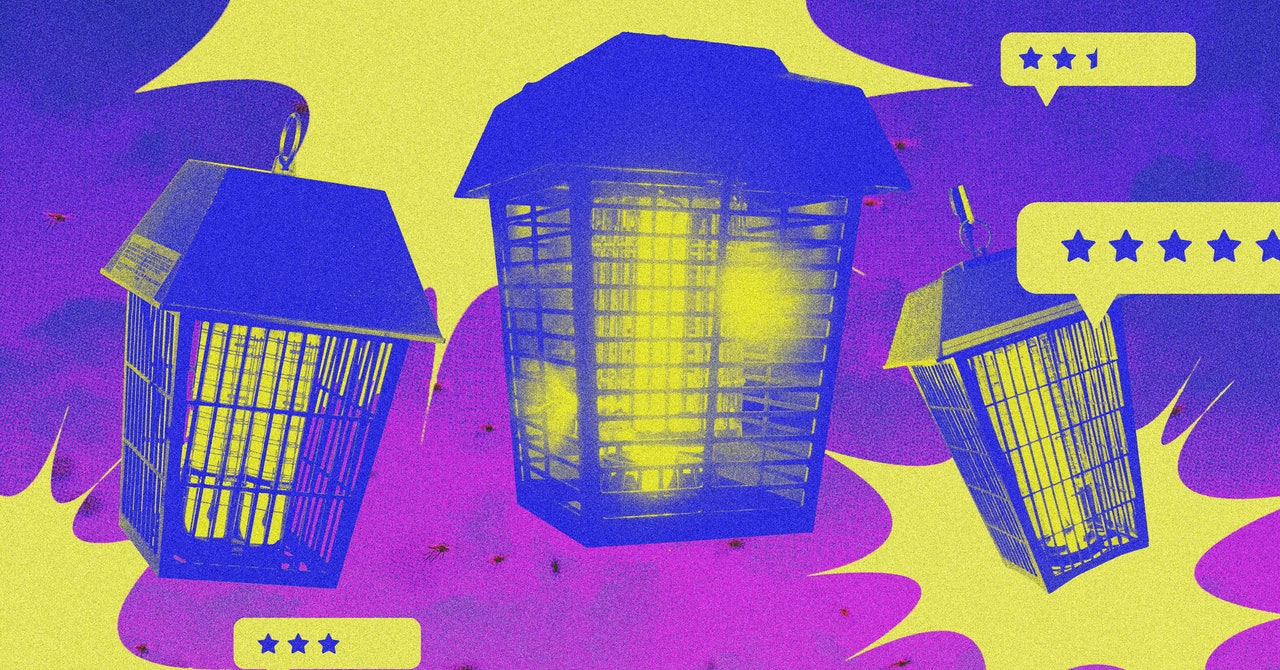Call it a bug zapper, not a feature.
Data from Fakespot, a service owned by Mozilla that helps consumers spot fake reviews and scams on shopping sites, shows a bizarre rise in the number of listings for bug zappers on Amazon over the past three years. At the same time, Fakespot has logged an increase in the number of negative or unreliable reviews for this product category.
Saoud Khalifah, founder and director of Fakespot at Mozilla, says bug zappers are just one example of the convergence of recent trends in ecommerce: a growing number of listings from third-party sellers on Amazon.com, more merchants seeking to sell low-cost products with high margins, and generative AI tools making it easier for sellers to churn out questionable marketing copy and reviews.
“Right now everyone has a different kind of determination of what ‘fake’ means,” Khalifah says. “In the book category, for example, you might see an author ask their friends and family to leave reviews and some people might see that as disingenuous. But when you look at this particular category, bug zappers, this is game-over territory. It’s one of the favorite products of fraudulent seller farms.”
Khalifah says bug zappers are one of a few categories of hardware products that Fakespot has examined recently on Amazon because it saw a rise both in product listings and unreliable reviews. The bug zapper listings it examined aren’t necessarily flat-out scams—buyers still receive an actual bug zapper—but Fakespot’s analysis says that negative reviews indicate some of the products don’t appear to work as advertised.
Among low-star reviews, buyers frequently complain that a bug zapper is simply a glow light without any real insect-killing capabilities. Fakespot also found errant reviews for different products placed among reviews for bug zappers. One bug zapper had hundreds of reviews, but most were written about a capacitor motor fan; another bug zapper listing had reviews of pens and paper goods.
Amazon spokesperson Maria Boschetti said in a statement that shopping at Amazon is “safe, authentic, and trustworthy.” She added that its store offers a wide selection of items and perspectives and has robust policies and guidelines. “Our technology continuously scans all products for sale for compliance, and if we discover a product was undetected by our controls, we remove the product immediately and refine our controls,” she said.
This week Amazon released a new Brand Protection Report, in which the company says that last year it invested more than $1.2 billion in brand protection and employed more than 15,000 people who were dedicated to thwart counterfeits, fraud, and other forms of abuse in its store. The company says it scans billions of attempted changes to products pages daily to spot signs of abuse.
The report acknowledges that the number of products in Amazon’s store continues to swell, which makes managing brand safety more complex—but says tools like image recognition and forgery detection tech enable it to spot inauthentic or counterfeit goods. Amazon also works with cross-border law enforcement agencies, including law enforcement in China, the company says, to identify and seize counterfeit goods.
Uncannily Similar
Fakespot uses machine learning to scan product details and product reviews on ecommerce sites, then typically assigns a “reliability grade” based on the signals it has pulled in. It might, for example, assign a “D” grade to a product listing and indicate that analysis suggests “68 percent of the reviews are reliable” but “review content quality is low.” It also sometimes shows its own rating for a shopper to compare with the rating on Amazon. A product with a four-star rating from Amazon might get only two stars from Fakespot.
The Fakespot tool has been critiqued in the past for what some see as ambiguity around its methods and the potential for it to unfairly label legitimate sellers. Amazon successfully lobbied Apple to remove Fakespot from the App Store three years ago, alleging that it provided misleading information. Fakespot has since been readmitted to the App Store as Fakespot Pro Browser and Fakespot Lite.
Read the full article here





